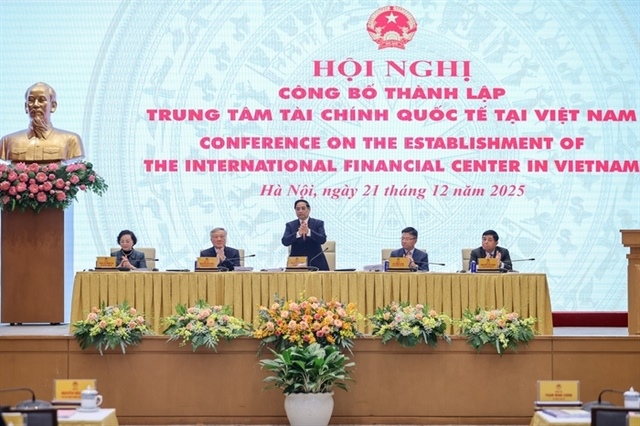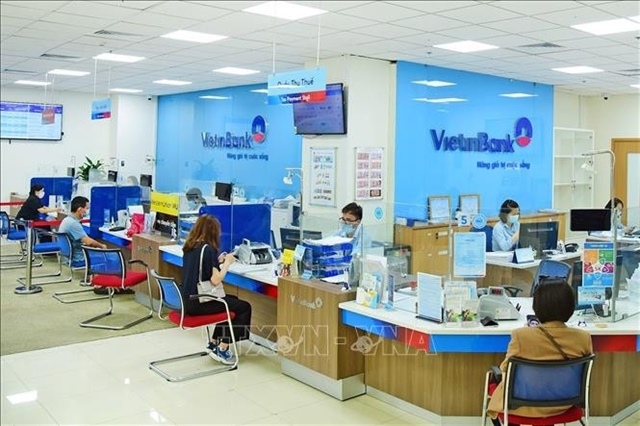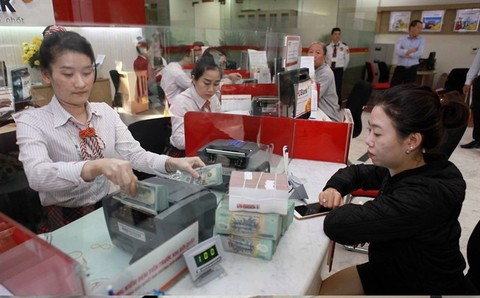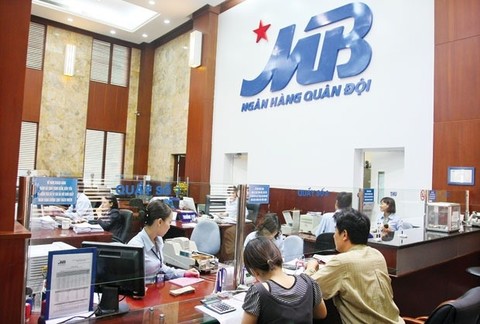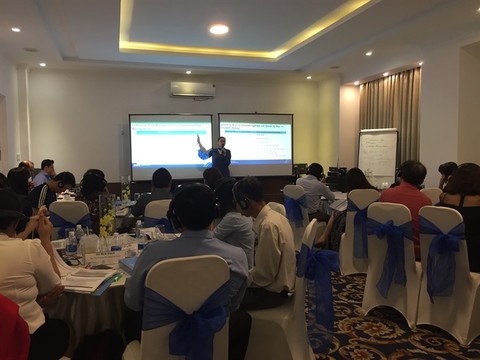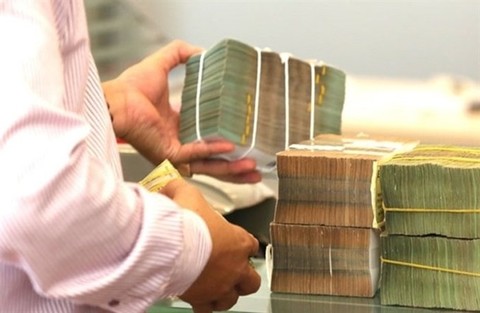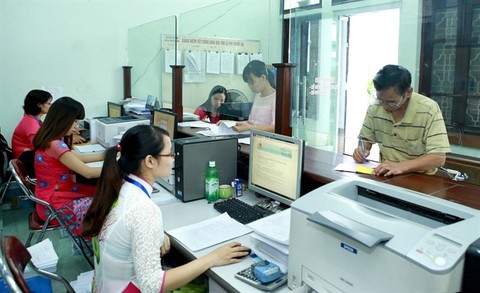A new route for ANZ as FDI growth hits records
A new route for ANZ as FDI growth hits records
Surfing the first wave of FDI inflows in the early 1990s never seemed enough for ANZ Vietnam. The lender has now chosen to focus all its resources on institutional banking, to continue catering to its clients and leveraging the opportunities arising from the current FDI growth in the country.
Making a fortune on wholesale
It has been 25 years since ANZ first entered the country in 1993, after the introduction of the Law on Foreign Direct Investment (FDI) in 1987, which opened the floodgates for a burgeoning inflow of FDI into the nation. Indeed, the inflow of FDI has changed the face of the local economy. It has bolstered economic growth and opened up a whole new world of opportunities for the local business community as well as the community of foreign-invested enterprises, including ANZ.
“I suppose you could say that we correctly forecast this incredible growth when we started 25 years ago,” was the joking assessment of Dennis Hussey, CEO of ANZ Vietnam and ANZ’s Greater Mekong Region head, when asked if the lender had been right about FDI growth from the beginning.
With the long-term vision and corporate strategy that set ANZ Vietnam – as well as some of the lender’s other Asian subsidiaries – to shift its focus on the institutional banking sector instead of retail, its initial decision to go with the flow of the FDI surge could have proven itself right on track.
The Melbourne-based lender, according to Hussey, is positioning itself at the centre of trade and investment flows between Asia, Australia, and the rest of the world. Vietnam, meanwhile, is playing a growing role in that network as the manufacturing hub of ASEAN, attracting record-breaking FDI from global investors.
According to the General Statistics Office of Vietnam (GSO), in the year to December 20, 2017, the country attracted a massive $21.3 billion in FDI for 2,591 newly-registered projects throughout the year. It is an uptick of 3.5 per cent in terms of projects and 42.3 per cent in terms of registered capital compared to the same period in 2016. On top of that, some $8.4 billion in additional capital were pumped into more than 1,000 existing or already-licensed projects from previous years, and $6.2 billion arose from merger and acquisition activities or stake sales of state-owned enterprises like Sabeco and Vinamilk.
“We want to be the banker of choice for these FDI flows, offering award-winning cash, trade, and foreign exchange services along with competitive loan products. We also want to provide the best service, economic, and market insights, as well as offer innovative technology solutions like cash fusion and host-to-host to multinationals,” said Hussey.
Go with the flow
Stepping up its wholesale banking comes at a perfect time for ANZ, considering the large amounts of capital required by the local economy for growth and the development of its financial system, infrastructure, exports, and manufacturing industries.
A targeted economic growth similar to the 6.8 per cent achieved in 2017 – or 6.7 per cent as a safe choice – for 2018 would require some 17-18 per cent in credit growth. For the country to reach that, ANZ will once again get a share of the credit growth assigned to it by the central bank. With resources now focused entirely on wholesale, the lender will surely be able to cater more to its institutional clients.
As the CEO of ANZ Vietnam noted, ANZ – like all banks in Vietnam – will grow its lending in accordance with the credit growth targets allocated by the State Bank of Vietnam (SBV), and in line with its risk appetite.
“In 2017, we grew lending to corporations significantly, in line with the credit growth allocated to us, and fortunately, [we] had a very clean credit risk performance. We expect to grow lending again in 2018, but will be disciplined in managing credit risks prudently,” said Hussey.
ANZ’s wholesale lending mission is further supported by an effort made last year by the SBV to foster lending to the local manufacturing sector and promote economic growth. It saw interest rates adjusted down by 0.25 percentage point, to sit at 6.25 per cent for refinancing rates and 4.25 per cent for discount rates.
The competitive advantage for ANZ in the wholesale banking sector also comes from its people and network. People, as CEO Hussey stressed, play a pivotal role in providing clients with quality solutions and solid advice on a market like Vietnam, which often experiences changes in regulatory environment.
“A network is an advantage, because multinationals, including the growing number of Vietnamese multinationals, value being recognised and understood by their bankers across multiple geographies with the same level of service and understanding as in their home market,” he added.
On the horizon
The operating environment for banks in Vietnam, according to Moody’s Investors Service, will benefit from robust economic growth, based on ongoing improvements to infrastructure, favourable demographics, and the government’s continued focus on reform to support FDI.
ANZ feels the same, having been continually optimistic about opportunities in Vietnam for many years, thanks to the stable government, favourable demographics, trade integration, FDI, and the emerging middle class.
When it comes to the banking business in Vietnam, the head of ANZ’s local unit noted that there are a few factors at play in the market that are driving bank strategies.
“In both corporate and retail banking, competition is clearly increasing and this is good for bank customers, but means there will be winners and losers amongst the banks,” Hussey said.
In addition, with Basel-II standards coming to Vietnam, there will be greater need for more capital and higher standards of risk management, which will be good for bank customers, according to Hussey. The SBV is also continuing to enhance the standards of governance and regulation in the market. “All of these factors are good for Vietnam, good for customers, but all will challenge weaker banks. I believe that some form of consolidation of banks is inevitable.
“The key point is that Vietnam’s banking sector is highly competitive, and so despite GDP growth, foreign and local banks must not be complacent. We need to invest in the quality of our services, technology, and risk management to meet the rising demands of the Vietnamese banking sector,” Hussey stressed.
On the horizon, ANZ sees itself as a bank that has been able to win the trust of the local society over the past 25 years, and will continue carrying on its great accomplishments into the future.
“As a guest in Vietnam, we have worked hard to play a positive role in the development of Vietnam’s banking sector and the economy as a whole. Looking to the future, Vietnam as an emerging middle-income country will need to expand and develop its domestic banking and capital markets, as well as secure new sources of commercial funding internationally. I am certain that ANZ will be leading many of these charges, and that we will continue to play a positive role in Vietnam’s next phase of growth and development,” noted Hussey.



